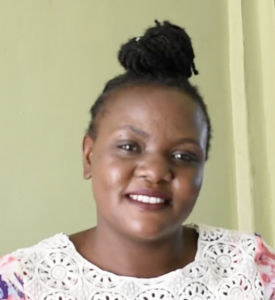The 350 community members of Emukhalari struggle to access sufficient water. Their primary water source, a previously protected spring, is in disrepair, causing the water to flow slowly, making water collection painfully frustrating. Waiting in long lines and traveling to and from the spring in the hot sun leaves people exhausted and often short-tempered with one another. Community members, primarily women and children, spend most of their day ensuring their households have enough water to perform basic activities instead of accomplishing other important tasks.

The spring was once protected, but its current state presents serious challenges. It's hard to access and challenging to collect sufficient water safely. During the rainy season, it floods, creating stagnant water that people must stand in to collect water and a slippery slope to traverse.
Without easy access to water, life for young Hassan A. is unmerciful.
"I don't like going for water, especially in the evening. During this time, I believe it's time for the whole village to come for water; there is always a long queue at the water point. Sometimes you meet rude people who will abuse you because you're young. This makes me sad to fail to play with my friends," said Hassan, 7, pictured below.

But access isn't the water point's only problem. Even though the water from the spout appears clean, no one can be sure that the natural filtering ability of the spring functions correctly. Without treating the water with chlorine or boiling it, people who drink this untreated water risk contracting debilitating waterborne illnesses.
And sadly, children in the community are the most vulnerable since they will drink directly from the muddy pool of water in the collection box while playing around the water point. It was reported that most children in this community have suffered from diarrhea and typhoid.
"Diarrhoeal disease is a leading cause of child mortality and morbidity in the world, and mostly results from contaminated food and water sources. In low-income countries, children under three years old experience on average three episodes a year. Each episode deprives the child of the nutrition necessary for growth. As a result, diarrhoea is a major cause of malnutrition, and malnourished children are more likely to fall ill from diarrhoea." - Africa WHO
38-year-old farmer Gertrude Bushuru (pictured below) has also experienced the high cost of drinking contaminated water in her family.
She said, "When it rains, the water gets contaminated with the run-off surface water, so during this period, I have to use chlorine in the drinking water. Sometimes the water tastes funny because of the chlorine in [the] water. I prefer to drink my water without chlorine. The last time I drank this water without chlorine, I was very sick with diarrhea. It affected my whole household. Since that day, I [have] preferred boiling my drinking water."

She continued, "Stepping in stagnant water while drawing water is not comfortable. Sometimes when you send children for water, it becomes difficult for them [to] draw clean water only. Sometimes the drawn water mixes with the stagnant water, and that makes the water dirty."
The protection of the spring will enable Hassan to collect water safely without fear and give him time to play with his friends. And Gertrude will be able to farm and provide for her family without worrying that the water she collects makes her family sick.
The Proposed Solution, Determined Together...
At The Water Project, everyone has a part in conversations and solutions. We operate in transparency, believing it benefits everyone. We expect reliability from one another as well as our water solutions. Everyone involved makes this possible through hard work and dedication.
In a joint discovery process, community members determine their most advantageous water solution alongside our technical experts. Read more specifics about this solution on the What We're Building tab of this project page. Then, community members lend their support by collecting needed construction materials (sometimes for months ahead of time!), providing labor alongside our artisans, sheltering and feeding the builders, and supplying additional resources.
Water Access for Everyone
This water project is one piece in a large puzzle. In Kenya, Sierra Leone, and Uganda, we're working toward complete coverage of reliable, maintained water sources that guarantee public access now and in the future within a 30-minute round trip for each community, household, school, and health center. One day, we hope to report that this has been achieved!
Training on Health, Hygiene & More
With the community's input, we've identified topics where training will increase positive health outcomes at personal, household, and community levels. We'll coordinate with them to find the best training date. Some examples of what we train communities on are:
- Improved hygiene, health, and sanitation habits
- Safe water handling, storage & treatment
- Disease prevention and proper handwashing
- Income-generation
- Community leadership, governance, & election of a water committee
- Operation and maintenance of the water point
Chlorine Dispensers
Installing chlorine dispensers is an important piece of our spring protection projects. Protecting a spring provides community members with an improved water source, but it doesn’t prevent contamination once the water is collected and stored. For example, if the water is clean and the container is dirty, the water will become contaminated.
We ensure that each chlorine dispenser is filled with diluted chlorine on a consistent schedule so that people can add pre-measured drops to each container of water they collect. That way, community members can feel even more confident in the quality of their water.





 Protected Spring
Protected Spring
 Rehabilitation Project
Rehabilitation Project































